Caitrin Keiper at The New Atlantis:
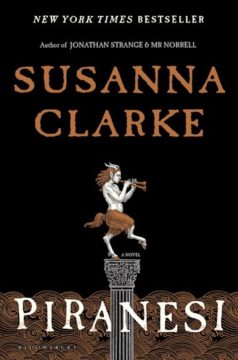 In Susanna Clarke’s fantasy novel Piranesi, we meet an exceptionally innocent narrator who dates his life from a sublime encounter he has with an albatross. As the bird comes swooping toward him, he has a vision that they could merge into a being he knows of but has never seen — “an Angel!” — and imagines how he will fly through the world with “messages of Peace and Joy.” When he and the albatross do not become one, he instead offers it a gracious welcome, and helps it gather materials for a warm, dry nest. He sacrifices his own resources to do this, “but what is a few days of feeling cold compared to a new albatross in the World?” From this point on, his detailed notebooks refer to “the Year the Albatross came to the South-Western Halls.”
In Susanna Clarke’s fantasy novel Piranesi, we meet an exceptionally innocent narrator who dates his life from a sublime encounter he has with an albatross. As the bird comes swooping toward him, he has a vision that they could merge into a being he knows of but has never seen — “an Angel!” — and imagines how he will fly through the world with “messages of Peace and Joy.” When he and the albatross do not become one, he instead offers it a gracious welcome, and helps it gather materials for a warm, dry nest. He sacrifices his own resources to do this, “but what is a few days of feeling cold compared to a new albatross in the World?” From this point on, his detailed notebooks refer to “the Year the Albatross came to the South-Western Halls.”
The man called Piranesi (though he correctly senses that is not really his name) is one of only two human inhabitants in what he calls the House, a labyrinth of marble halls and ocean life and statues of people and nature and legend. Piranesi’s many energies are devoted to exploring and documenting the House with care.
more here.

 Certain books never live up to their memorable titles. Others do, but not in the way their authors might have anticipated. Julien Benda’s The Treason of the Intellectuals, an essential intervention in 20th-century debates about intellectual responsibility, is the second sort of book. Cast into the agitated waters of European politics between the two world wars, it still floats ashore every decade or so, attracting readers with its stirring call to the independent life of the mind, free from the lures of power and authority. It is essential reading. Ever since the book’s publication in 1927, its argument has been taken up by writers of very different political stripes in very different historical circumstances. In the 1930s communist intellectuals denounced their fascist counterparts as traitors to the truth; liberals levied the same charge against communists and fellow travelers during the Cold War, only to find themselves then put in the dock by progressives and neoconservatives and now populists. Treason is one of those books that serve both as a lens for discerning the present and a mirror reflecting the image of those who appeal to it.
Certain books never live up to their memorable titles. Others do, but not in the way their authors might have anticipated. Julien Benda’s The Treason of the Intellectuals, an essential intervention in 20th-century debates about intellectual responsibility, is the second sort of book. Cast into the agitated waters of European politics between the two world wars, it still floats ashore every decade or so, attracting readers with its stirring call to the independent life of the mind, free from the lures of power and authority. It is essential reading. Ever since the book’s publication in 1927, its argument has been taken up by writers of very different political stripes in very different historical circumstances. In the 1930s communist intellectuals denounced their fascist counterparts as traitors to the truth; liberals levied the same charge against communists and fellow travelers during the Cold War, only to find themselves then put in the dock by progressives and neoconservatives and now populists. Treason is one of those books that serve both as a lens for discerning the present and a mirror reflecting the image of those who appeal to it. Lisa Dang wasn’t even born when astronomers started planning the most ambitious and complex space observatory ever built. Now, three decades later, NASA’s James Webb Space Telescope (JWST) is finally about to launch, and Dang has scored some of its first observing time — in a research area that didn’t even exist when it was being designed.
Lisa Dang wasn’t even born when astronomers started planning the most ambitious and complex space observatory ever built. Now, three decades later, NASA’s James Webb Space Telescope (JWST) is finally about to launch, and Dang has scored some of its first observing time — in a research area that didn’t even exist when it was being designed.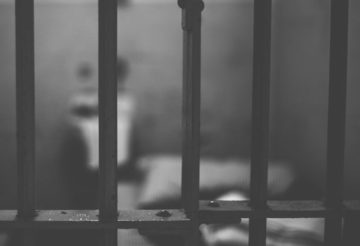 Nearly every state in the country has a statute—often called a “board bill” or “pay-to-stay” bill—that charges people for time served. In Missouri and Oklahoma—and in states on both coasts and in the Deep South—these pay-to-stay bills follow defendants arrested initially for small offenses like petty theft or falling behind in child support. Nearly 80 percent of these defendants live below the federal poverty line, meaning they make less than $12,880 a year if they are single, or $21,960 if they are a family of three.
Nearly every state in the country has a statute—often called a “board bill” or “pay-to-stay” bill—that charges people for time served. In Missouri and Oklahoma—and in states on both coasts and in the Deep South—these pay-to-stay bills follow defendants arrested initially for small offenses like petty theft or falling behind in child support. Nearly 80 percent of these defendants live below the federal poverty line, meaning they make less than $12,880 a year if they are single, or $21,960 if they are a family of three.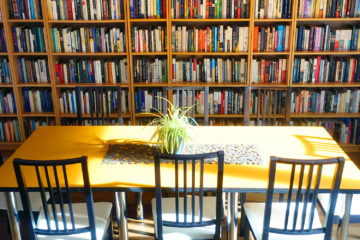 2021 is the 6th year we’re approaching experts and asking them to recommend the best books published in their field, whether it’s history or historical fiction, science or science fiction, math or
2021 is the 6th year we’re approaching experts and asking them to recommend the best books published in their field, whether it’s history or historical fiction, science or science fiction, math or 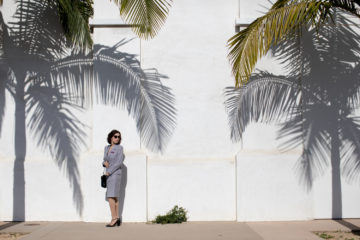 The family has been an infinite well of inspiration for photographers for as long as the medium has existed. From Larry Sultan’s Pictures From Home to LaToya Ruby Frazier’s The Notion of Family, the family unit has proved a conduit for explorations of belonging, identity, strife, place, connection, injustice and more. Photographers have both worked behind the camera and stepped into the frame in order to capture the most universal of subjects, the complications and connections to those we love.
The family has been an infinite well of inspiration for photographers for as long as the medium has existed. From Larry Sultan’s Pictures From Home to LaToya Ruby Frazier’s The Notion of Family, the family unit has proved a conduit for explorations of belonging, identity, strife, place, connection, injustice and more. Photographers have both worked behind the camera and stepped into the frame in order to capture the most universal of subjects, the complications and connections to those we love.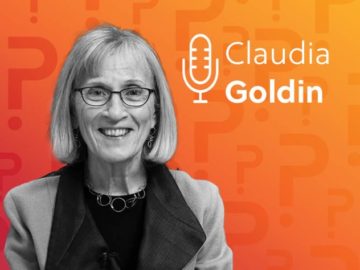 Claudia Goldin, Henry Lee professor of economics, shares the reason why working mothers still earn less and advance less often in their careers than men: time. Even with antidiscrimination laws and unbiased managers, certain professions pay employees disproportionately more for long hours and weekends, passing over women who need that time for family care. Goldin also discusses how COVID-19’s flexible work policies may help close the gender earnings gap.
Claudia Goldin, Henry Lee professor of economics, shares the reason why working mothers still earn less and advance less often in their careers than men: time. Even with antidiscrimination laws and unbiased managers, certain professions pay employees disproportionately more for long hours and weekends, passing over women who need that time for family care. Goldin also discusses how COVID-19’s flexible work policies may help close the gender earnings gap.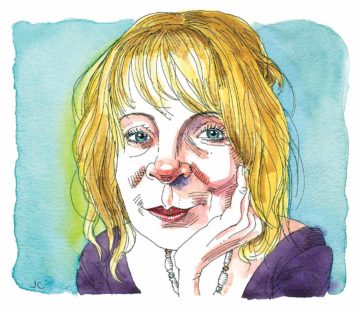 Cora Currier in The Nation:
Cora Currier in The Nation: In the L.A. Review of Books:
In the L.A. Review of Books: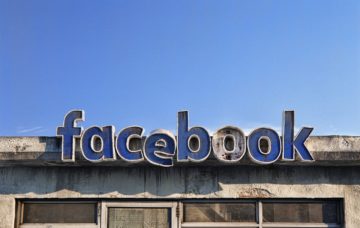 Henry Farrell and Glen Weyl in Boston Review:
Henry Farrell and Glen Weyl in Boston Review: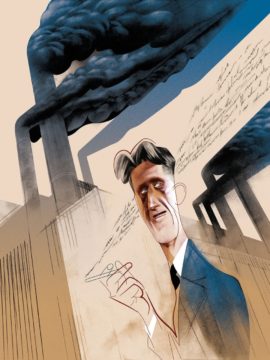 Ian McEwan in New Statesman:
Ian McEwan in New Statesman: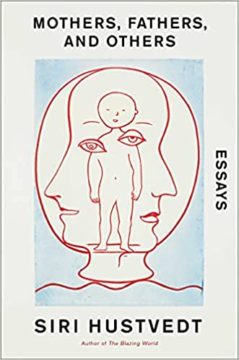 When Hustvedt returns to the idea of what’s missing, her writing takes off. In “Both-And,” an essay on Bourgeois, she offers the concept of intercorporeality from French philosopher Maurice Merleau-Ponty: “that human relations take place between and among bodies, that we perceive and understand others in embodied ways that are not conscious.” What could be more loaded than the mother’s body, a body that is not one, but two? A body that is no longer hers alone? “The artist sees the object unfold, a thing that rises out of you, is related to you, but is not you either,” Hustvedt writes about Bourgeois’ work. But this easily applies to birth and mothering.
When Hustvedt returns to the idea of what’s missing, her writing takes off. In “Both-And,” an essay on Bourgeois, she offers the concept of intercorporeality from French philosopher Maurice Merleau-Ponty: “that human relations take place between and among bodies, that we perceive and understand others in embodied ways that are not conscious.” What could be more loaded than the mother’s body, a body that is not one, but two? A body that is no longer hers alone? “The artist sees the object unfold, a thing that rises out of you, is related to you, but is not you either,” Hustvedt writes about Bourgeois’ work. But this easily applies to birth and mothering. One Friday begins on a Friday in April 2006, when the forty-seven-year-old Antrim, having just had a spat with his girlfriend, is clinging to the fire escape of his four-story apartment building in Brooklyn, considering jumping to his death. (Although one wonders if falling from this height might have resulted in serious injury rather than death.) “I didn’t know why I had to fall from the roof,” he writes, “why that was mine to do.” He goes on to tell us that depression is a “misleading term,” that he prefers to call his depression “suicide” because he sees it “as a long illness, an illness with origins in trauma and isolation” rather than “the death, the fall from a height or the trigger pulled.” Although Antrim offers this explanation as an original take on an enigmatic condition, I found it befuddling rather than clarifying: suicide is sudden and immediate while depression is a long and often recurrent illness. There is no getting around it: the former is a decision, however impulsive and catastrophic; the latter is a passively endured condition, the result of our chemistry and psychological vulnerabilities.
One Friday begins on a Friday in April 2006, when the forty-seven-year-old Antrim, having just had a spat with his girlfriend, is clinging to the fire escape of his four-story apartment building in Brooklyn, considering jumping to his death. (Although one wonders if falling from this height might have resulted in serious injury rather than death.) “I didn’t know why I had to fall from the roof,” he writes, “why that was mine to do.” He goes on to tell us that depression is a “misleading term,” that he prefers to call his depression “suicide” because he sees it “as a long illness, an illness with origins in trauma and isolation” rather than “the death, the fall from a height or the trigger pulled.” Although Antrim offers this explanation as an original take on an enigmatic condition, I found it befuddling rather than clarifying: suicide is sudden and immediate while depression is a long and often recurrent illness. There is no getting around it: the former is a decision, however impulsive and catastrophic; the latter is a passively endured condition, the result of our chemistry and psychological vulnerabilities. Donald Trump, however, will not say this. He has spent the year since he lost insisting that he won. His supporters believe the same.
Donald Trump, however, will not say this. He has spent the year since he lost insisting that he won. His supporters believe the same.